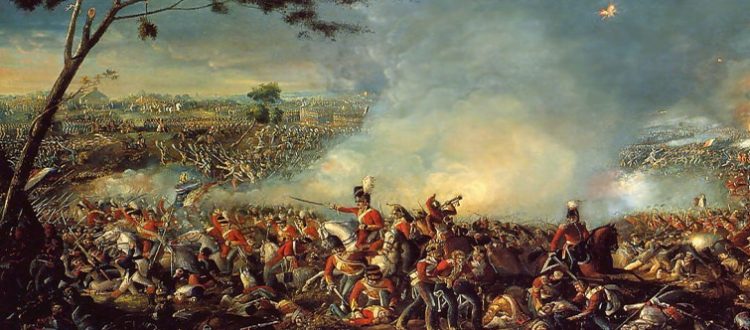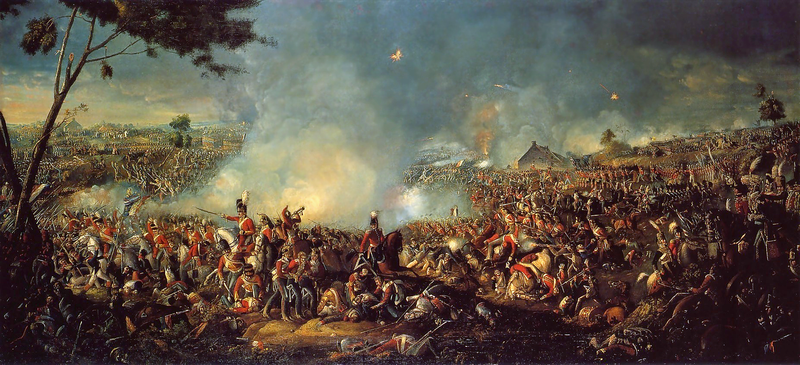A most uninteresting collection of farmers
By Dr Adam Chapman
Other entries on this blog have discussed some early nineteenth century perspectives on the site of the battle with reference to the years immediately after the Battle of Waterloo, for the award of campaign medals and some early archaeological investigations. This account comes from John Gordon Smith (1792-1833), a Scottish surgeon attached to the 12th Lancers in 1815, was among those who was awarded his medals at Azincourt. His description of the topography of the area of the battlefield both provides some interesting detail but does assume that the countryside of this corner of northern France had remained relatively unchanged over a period of 400 years. His familiarity with the site comes from being billeted nearby in 1816 and his account was included in a biography of Henry V published in 1838 by James Endell Tyler (1789-1851), a Monmouth-born Churchman.
“The spot from which the battle of Agincourt took its name has been confounded with a place named Azincourt, near the town of Bouchain in French Flanders. On the position of the real field of battle, and its present condition, the Author has much satisfaction in making the following extract from a paper read before the Royal Society of Literature, April 4, 1827, by John Gordon Smith, M.D. who had visited and examined the spot under circumstances of peculiar interest:
“Perhaps I may be pardoned for relating that I had the honour to receive a Waterloo medal on the field of Azincour, or rather, that I had the fortune to belong to one of the British regiments that signalized themselves in the campaign of 1815, and which afterwards was invested with the above-mentioned mark of their sovereign’s approbation on the very spot which, nearly four hundred years before, was the scene of the scarcely less glorious triumph of Harry the Fifth of England. In 1816 a portion of the British army was cantoned in the immediate neighbourhood of this celebrated field, and the corps in which I then served made use of it during several months as their ordinary drill-ground… We amused ourselves with reconnoitring excursions, comparing the actual state of the localities with authentic accounts of the transactions of 1415. The changes that have taken place have been singularly few, and an attentive explorer would be able to trace with considerable accuracy the greater part of the route pursued by the English army in their retreat out of Normandy towards Calais. The field of Azincour remains sufficiently in statu quo to render every account of the battle perfectly intelligible; nor are those wanting near the spot, whose traditionary information enables them to heighten the interest with oral description, accompanied by a sort of ocular demonstration.
“Those who travel to Paris by way of St. Omer and Abbeville, pass over the field of the battle, which skirts the high road to the left, about sixteen miles beyond St. Omer; two on the Paris side of a considerable village or bourg named Fruges; about eight north of the fortified town of Hesdin; and thirty from Abbeville. All accounts of the battle mention the hamlet of Ruisseauville, through which very place the high road to Paris now passes.
“Azincour is a commune or parish consisting of a most uninteresting collection of farmers’ residences and cottages, once however distinguished by a castle, of which nothing now remains but the foundation. The scene of the contest lies between this commune and the adjoining one of Tramecour, in a wood belonging to which latter the King concealed those archers whose prowess and vigour contributed so eminently to the glorious result. Part of the wood still remains; though, if I remember rightly, at the time of our visit, the corner into which the bowmen were thrown had been materially thinned, if, indeed, the original timber had not been entirely cut down, and its place been scantily supplied by brush or underwood. Some of the trees, however, in the wood of Tramecour were very old in 1816.
“The road above mentioned is the great post-road; the old road, now degenerated into a mere cart-track, from Abbeville to the once celebrated city of Therouanne, passes over the scene of action, and must have been that by which the French army reached the ground before the English, who had been compelled to make a great circuit.”
The above is taken from Page 57, Volume II of Henry of Monmouth: or, Memoirs of the life and character of Henry the Fifth, as Prince of Wales and King of England by J. Endell Tyler, B.D. Rector of St Giles in the Fields, London, published London, 1838. The full text can be downloaded at archive.org.
Our thanks again to Dom Barker for passing on this information.
Portrait of the battle of Waterloo by William Sadler, taken from Wikipedia and is in the Public Domain

